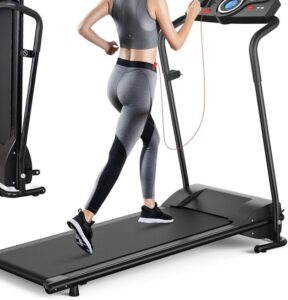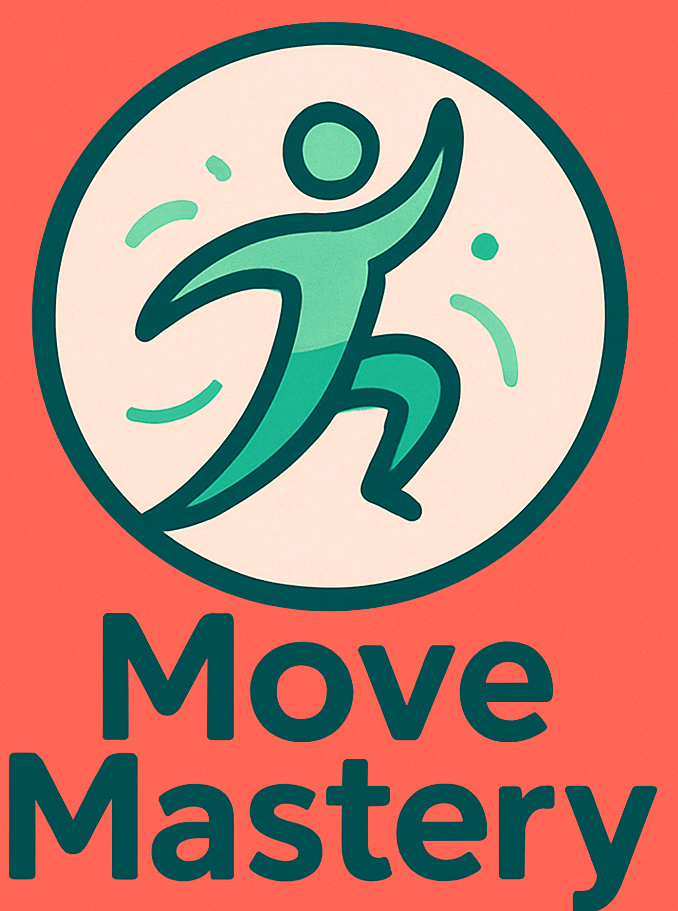
The debate between outdoor running and treadmill workouts is common among fitness enthusiasts. I have spent a lot of time comparing both methods to see which one really provides better results. Each option comes with its own set of benefits and drawbacks that can affect the workout experience. For those trying to decide between the scenic route and a controlled indoor environment, this guide breaks down the key details to help you choose the option that works best for you.
Overview of the Two Options
What is Outdoor Running?
Outdoor running means taking your workout outside into the real world. You get to run along trails, on sidewalks, or even on park paths while enjoying fresh air and changing scenery. Many runners love the natural challenges like variable terrain and weather conditions, which can add intensity and variety to your runs. The wellness benefits go beyond physical improvements; many find that outdoor running improves mood and reduces stress levels.
Who is Outdoor Running Best For?

This method of running is great for individuals who appreciate nature and enjoy unpredictable environments. Outdoor running lets you pick up different paths and routes, making each run feel unique. If you enjoy solitary time in nature or relish the challenge of adapting to environmental conditions, outdoor running might be the right choice. It suits people who thrive on diversity in their workouts and prefer the freedom of open space.
Outdoor Running Pros & Cons
Pros:
- Natural scenery and fresh air step up the workout experience.
- Varied terrain can increase physical strength and balance.
- Often free with no gym membership required.
Cons:
- Weather conditions might disrupt running plans.
- Unpredictable terrain can increase the risk of injury.
- Limited control over pace and environmental conditions.
What is Treadmill Running?

Treadmill running offers a controlled environment for running and training. Using a treadmill means you have a predictable surface and the ability to adjust settings like slope and speed. Treadmills often feature cushioning that helps reduce joint impact, making them popular for people recovering from injuries or looking to minimize stress on their knees and ankles. This option also makes it easier to track progress with digital displays that show distance, time, and calories burned.
Who is Treadmill Running Best For?
Treadmill running is ideal for people who prefer indoor workouts, especially when outdoor conditions are poor. It is a favorite among busy professionals who want to fit a workout into a tight schedule or people who enjoy structured training sessions with data tracking. Treadmill workouts are also appealing for those who wish to control every element of their workout, from the pace to the incline, making it easier to tailor training sessions to meet specific goals.
Treadmill Running Pros & Cons
Pros:
- A controlled setting helps maintain a consistent pace.
- The ability to adjust settings makes it easy to map out personalized training programs.
- A cushioned surface reduces the risk of joint impact injuries.
Cons:
- May feel monotonous compared to the variety offered by outdoor routes.
- Gym membership fees or the purchase of equipment can be costly.
- An indoor environment may not provide the same mental refreshment as being out in nature.
Key Feature Comparisons
- Environment & Scenery
Why It Matters: The setting plays a role in motivation and enjoyment. A stimulating environment can provide an overall boost to your workout satisfaction.
Outdoor Running: Offers ever-changing scenes, natural sounds, and fresh air, making the experience more exhilarating.
Treadmill Running: Provides a predictable environment that is ideal for steady training sessions, though it might feel repetitive over time.
Winner: Outdoor Running. If you value variety in your surroundings, you may find this option more engaging. - Health Impact and Performance
Why It Matters: How your body deals with different types of running influences injury risks and overall performance.
Outdoor Running: The natural surfaces can intermittently challenge muscles, potentially leading to better strength building and balance, though there is a slight risk of injury from uneven ground.
Treadmill Running: Offers consistent and cushioned surfaces that help reduce strain, making it easier to monitor your progress with steady output.
Winner: It depends on your needs. Outdoor running can be excellent for muscle strength, while treadmill running may be better for protecting joints and maintaining consistency. - Convenience & Flexibility
Why It Matters: The ease of access and ability to work around your schedule are crucial for maintaining a regular exercise routine. - : Weather and time of day can dictate when and where you run, though the freedom and fresh air are definite pluses during good conditions.
Treadmill Running: Provides the flexibility of indoor training regardless of the weather, allowing you to run when it best fits your daily routine.
Winner: Treadmill Running. For those wanting a reliable routine independent of external factors, this option stands out. - Cost & Maintenance
Why It Matters: Your workout should align with your budget and lifestyle without excessive cost or maintenance.
Outdoor Running: Typically free aside from investing in proper running shoes and minimal gear, letting you explore different locations on a budget.
Treadmill Running: Involves costs such as a gym membership or purchasing equipment and paying for maintenance and electricity, but the controlled setup can be justified for serious training.
Winner: Outdoor Running. If keeping expenses low is important, running outdoors has the edge. - Training and Performance Monitoring
Why It Matters: Tracking your workout metrics can boost motivation and help you adjust your training approach.
Outdoor Running: Modern wearable technology like smartwatches and apps can track pace, distance, and heart rate, though these require additional devices.
Treadmill Running: Many treadmills include built-in screens that display speed, distance, and workout plans, making it simple to keep an eye on your performance.
Winner: Treadmill Running. This option is often preferred by those who want in-the-moment performance data without extra gear.
User Reviews & Reputation
Outdoor Running: Runners appreciate the natural setting and the mental break it offers from daily routines. Many have mentioned that their body adapts to varying terrains, and this variety helps build strength and stamina over time. Some reviewers say that the unpredictability can be challenging, especially during off-season weather or in urban areas with heavy traffic.
Treadmill Running: Users frequently highlight the ease of tracking workouts and the convenience of having a scheduled workout routine. The cushioned surface is a major plus for those looking to reduce joint impact. However, some find the indoor setting to be less inspiring over extended periods, with each session feeling rather repetitive. Overall, treadmill running offers reliability for performance tracking, though many still favor outdoor running for its refreshing change of scenery.
Overall Reputation: Both forms of running have earned respect among various groups of users. Outdoor running is celebrated for its natural benefits and the mental clarity it can bring, while treadmill running gets praise for its practical setup and precise measurement features. The final choice usually comes down to personal priorities such as cost, safety, and individual fitness goals.
Final Verdict: Which One Should You Choose?
Both outdoor running and treadmill running have their own strengths, and the best option for you depends on your workout goals and lifestyle. Outdoor running might provide a better overall experience if you enjoy nature and want an ever-changing workout environment. It is especially ideal if you appreciate not having to pay extra fees and love soaking up some natural vitamin D during your runs.
If you value a controlled workout setting with the ability to monitor specific metrics and maintain a steady routine regardless of the weather, treadmill running can be the superior fit. The structured environment and customizable workout options might help you reach particular fitness targets with greater efficiency. Take the time to consider what fits best with your personal goals.
Choose Outdoor Running if you:
- Love the freedom of nature and the variety in scenery.
- Want a cost-effective workout that sparks creativity.
- Enjoy the challenge of adapting to different surfaces and weather conditions.
Choose Treadmill Running if you:
- Prefer a steady, predictable setting regardless of the weather.
- Need consistent performance tracking during your workouts.
- Value a cushioned surface that may help reduce injury risks.
Final Thoughts
Deciding between outdoor running and treadmill running is a personal decision that comes down to lifestyle, preferences, and goals. Each method offers unique benefits and challenges that cater to different needs. Outdoor running might be more appealing if you love nature and variety, while treadmill running offers convenience and consistency for structured training sessions.
I encourage you to weigh these factors in light of your personal fitness goals. Whether you choose the open trails or the steady rhythm of a treadmill, both methods can help you achieve great results. What works best for one person might not work for another, so consider giving both a try and see which one matches your style and expectations best.
Which option do you enjoy more? Feel free to share your experiences and thoughts on this topic!
Additional Considerations & Safety Tips

Before you make your final decision, it is very important to consider several extra factors that may affect your experience regardless of whether you choose outdoor running or treadmill running. It is a good idea to ask about your physical condition and personal health requirements. Budget restrictions, the need for safe and well-lit running paths outdoors, and even the convenience of having a workout buddy or community group can greatly influence your commitment. Always stay sharp when planning your workout schedule and make sure someone knows your route if you head outdoors.
Additional safety strategies include proper warm-up and cool-down routines, using technology such as fitness trackers to monitor your exertion, and investing in the proper footwear that suits your running style. For those using treadmills, always ensure the equipment is well maintained and that you have a safety key within easy reach. These extra steps can help you avoid injuries and make your exercise routine both enjoyable and beneficial over the long term.
Moreover, personal motivation and clear fitness goals can help maintain consistency in your training regimen. This next-level cool guide is meant to give you practical insights while also serving as a reminder to take care of yourself. Experimenting with different outdoor routes or varied treadmill programs can add some variety to your workouts and give a boost to your performance.
Scientific Research and Expert Opinions

Many experts in sports science and physical training have studied the effects of outdoor running versus treadmill running. Research indicates that natural surfaces provide varied resistance that can help strengthen leg muscles and improve overall coordination. Some fitness professionals point out that running outdoors not only gives you a more spontaneous workout experience but also helps you jump into a better mental state by exposing you to nature’s dynamic environment.
Conversely, scientific studies have found that the controlled setting of a treadmill can minimize the risk of overextending joints, making it a safer option for beginners or for those recovering from injuries. The ability to map out your workout precisely using digital monitoring equipment means that treadmill running often turns up as an excellent choice for those focused on tracking their progress closely. Experts consistently recommend mixing both methods from time to time to capture the maximum benefits of each style.
